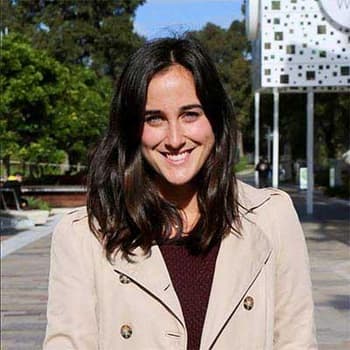Psychodynamic Therapy In South Florida
Written by Daron Christopher
& Medically Reviewed by Dr. Sarah Dash, PHD
Medically Reviewed
Last updated: 08/06/2021
Key Takeaways
- Psychodynamic therapy is a treatment option for mood disorders as well as other conditions like OCD or PTSD
- This therapy aims to bring awareness and insight into beliefs that a person may not realize they hold
- Psychodynamic therapy is often brief, can be integrated into other treatments and can be conducted using art or music
- This therapy is based on Freudian theories of psychology, but has been modernized and is supported by evidence
- This therapy can help people understand how past experiences and beliefs are impacting current happiness and mental health.
With the goal of understanding unconscious beliefs related to mental health, psychodynamic therapy can be an effective treatment. Learn the types and benefits of this therapy.
The way that we process our thoughts and feelings has a big impact on mental health. There are many types of therapy that can help us to better understand their thoughts and beliefs and how they relate to how we feel and behave.
Psychodynamic therapy is one of the therapy options that addresses the link between thoughts and behaviors. Importantly, a defining feature of psychodynamic therapy is that it aims to address thoughts or beliefs that are unconscious or that we may not realize we have.
Psychodynamic therapy can bring certain beliefs and thoughts to the forefront, which allows them to be recognized, understood or modified. This therapy can help people understand underlying reasons for behavior and this understanding can promote changes that improve mental health.
Who Benefits From Psychodynamic Therapy
There are many disorders that can benefit from psychodynamic therapy, including depression and anxiety. Psychodynamic therapy may also be beneficial to treat people with obsessive-compulsive disorder or post-traumatic stress disorder.
In general, psychodynamic therapy can help with depression and anxiety by helping them to evaluate and understand underlying causes of feelings and behaviors. Psychodynamic therapy can benefit anyone who is struggling to understand how past experiences may be impacting current behavior and mental health.
Goal Of Psychodynamic Therapy
Overall, the goal of psychodynamic therapy is to examine and understand underlying or unconscious thoughts and behaviors that are preventing a person from living and feeling their best.
Psychodynamic therapy involves helping people bring self-awareness to how past behavior and experiences can influence their current beliefs and mental health. By dealing with these underlying factors, therapy can help people process and deal with past conflicts or emotions that they may not realize are impacting them.
Psychodynamic therapies are intended to allow the patient to explore the full range of their emotions, thoughts or experiences they may be avoiding and to identify things that may be preventing them from enjoying their lives.
Types Of Psychodynamic Therapy
There are a few different psychodynamic therapy techniques and delivery methods that can be used. Different styles of therapy may be included in a treatment plan based on what is best suited for an individual.
Some examples of the types of psychodynamic therapy include:
- Short-Term Therapy: Short term psychodynamic therapy may include weekly sessions for a relatively short period of time, perhaps as few as eight sessions. For example, weekly treatment for less than a year is shown to be effective.
- Family Therapy: Depending on the type of condition, family-based may be effective. This can include brief psychodynamic therapy techniques integrated within a broader treatment program that help to examine the underlying causes of a mental health condition.
- Art & Music Therapy: Art and music can be used in psychodynamic therapy to help explore complex thoughts and feelings in a safe and non-judgemental way. Using art and music has been shown to be effective as part of a comprehensive treatment strategy for managing severe mental illness.
History Of Psychodynamic Therapy
The history of psychodynamic therapy is tied to Sigmund Freud’s now iconic psychoanalytic theory. This therapy originated in Freud’s ideas that problems were caused by interactions between the id (unconscious) and the ego. This therapy aimed to address the ego, which can act as a protective mechanism against pain and discomfort.
Modern therapies have moved away from Freudian theories and analytical techniques, however, there is evidence to support modern psychodynamic therapy and psychology as an effective type of therapy.
We are here when you are ready.
Speak with a Recovery Advocate today to talk about your treatment options.
Psychodynamic Therapy Compared To Psychoanalytic Therapy
Because they are similar in name, many people may wonder what is the difference between psychodynamic and psychoanalytic therapy.
Some of the primary differences include that psychoanalytic therapy is often conducted for a very long period of time, by a therapist who is certified in psychoanalysis. Although psychodynamic theory is based on psychoanalytic principles, it is a much shorter type of therapy. It is also not necessarily conducted by a psychoanalyst but can be integrated into other types of modern therapy.
View Sources
Shedler, Jonathan. “The Efficacy of Psychodynamic Psychotherapy.” American Psychologist, 2009. Accessed September 13, 2019.
American Psychological Association. “Psychodynamic Psychotherapy Brings Lasting Benefit Through Self-Knowledge.” January 25, 2010. Accessed September 13, 2019.
Leichsenring, Falk et al. “Psychodynamic therapy meets evidence-based medicine: a systematic review using updated criteria.” Lancet Psychiatry, 2015. Accessed September 13, 2019.
Montag C et al. “A Pilot RCT of Psychodynamic Group Art Therapy for Patients in Acute Psychotic Episodes: Feasibility, Impact on Symptoms and Mentalising Capacity.” PLOS ONE, 2014. Accessed September 13, 2019.
Center for Substance Abuse Treatment. “Chapter 7—Brief Psychodynamic Therapy.” 1999. Accessed September 13, 2019.
American Psychological Association. “Psychoanalysis vs. psychodynamic therapy.” December, 2107. Accessed September 13, 2019.
Authorship



